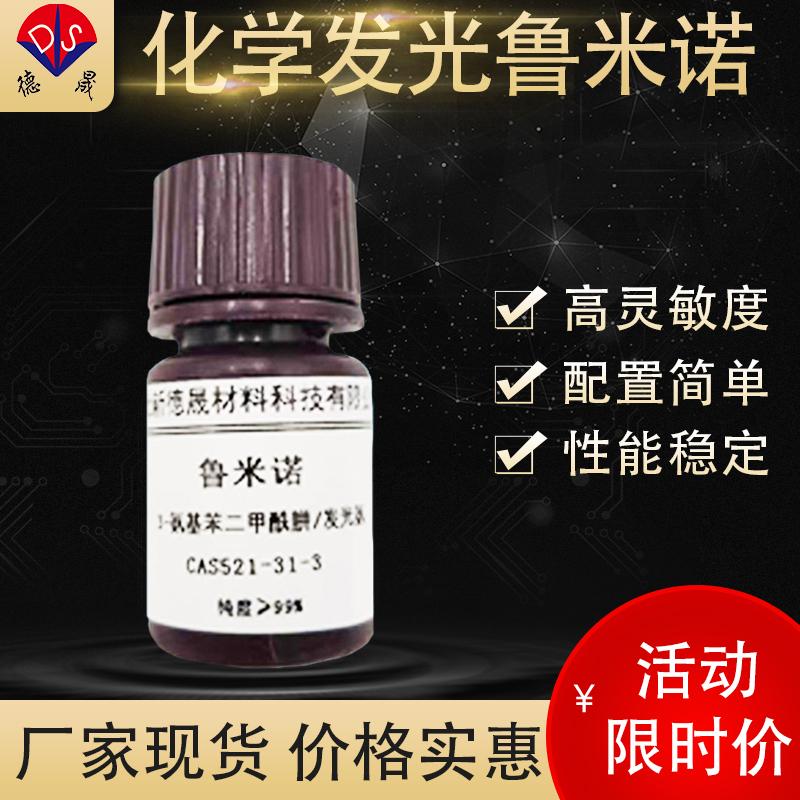Luminol's luminescence principle and application
Model No.︰-
Brand Name︰desheng
Country of Origin︰-
Unit Price︰CNY ¥ 28 / g
Minimum Order︰10 g
Product Description
Luminol, also known as 3-amino-phthalic hydrazide by chemical name, is a yellow-white powder at room temperature, which is relatively stable. At the same time, it is a weak acid, which is irritating to the body surface skin and breathing.
Luminol will be widely used in criminal investigations, especially when testing blood to play an extremely powerful role.
Human blood contains hemoglobin, which is inhaled from the air and transported to all parts of the body by this protein. When examining blood stains in criminal investigation, luminol will react with heme and emit blue-green light.
This detection method is extremely accurate and can detect a very small amount of blood, just like a small drop of blood in a large tank of water. Find it soon.
Moreover, luminol luminescence is also closely related to catalysts, including the daily use of hypochlorous acid bleach. If in a criminal case, the criminals have cleaned the scene with hypochlorous acid, it will interfere with the use of luminol.
Judging from the detection process, the two kinds of luminescence are different. When bleach is used, the luminescence speed flashes quickly, while the luminescence containing blood stains in the detection appears slowly.
The luminescence of Luminol can be applied to the field of criminal investigation. So, what is the principle of Luminol's luminescence?
1. Luminol needs to be oxidized by sodium hypochlorite to emit light.
2. Hydrogen peroxide reacts with sodium hypochlorite to generate oxidized luminol and emit light.
Luminol (3-amino-phthalohydrazide) is often used in detection as a chemiluminescence reagent. How to detect its luminescence? There are three methods to detect luminescence, which are accelerated luminescence using catalysts, inhibitor assays, and coupled indirect assays.
Accelerating the luminescence of the catalyst means that when the detection speed of luminol is slow, a catalyst is added to accelerate the detection process. Commonly used catalysts are peroxides, metal complexes, and metal ions.
Acceleration and inhibition are complementary to each other. Some organic substances can inhibit the luminescence of luminol, such as reducing compounds containing phenolic hydroxyl groups. In this case, the second inhibitor indirect assay method is required.
The coupled indirect assay method refers to the combination of the reaction chemical light produced or consumed, thereby realizing the indirect luminescence of the substance.
Desheng is committed to professional research and development of luminescent reagents, and produces a series of products including luminol, isoluminol, acridine esters, etc. If you have relevant needs, you can click on the official website or call for consultation, providing you with professional one-stop procurement services.
Product Image



